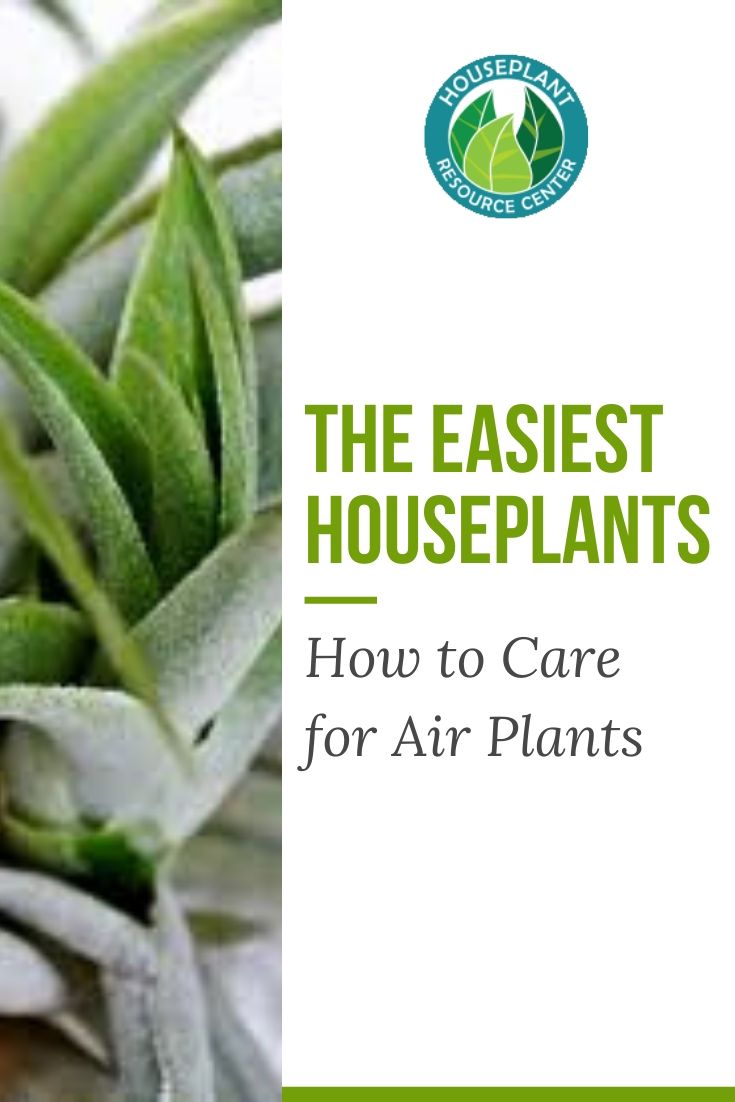The Easiest Houseplants: How to Care for Air Plants

Table of Content
If you want the lowest maintenance plants possible, here they are! It’s so easy to learn how to care for air plants—you’ll be hooked!
Air plants are a group of plants that don’t need soil to grow. Air plants are epiphytes, a type of plant that grows on other plants rather than in soil.
They get almost all of their nutrients from the air and they can also thrive in artificial, fluorescent light.
However, they do require water, but you can easily water them on a schedule. Just set a timer on your phone!
They look stunning in terrariums and tend to be very small, so this is the plant for you if you don’t have a lot of light or space in your home. They’re so hardy that you can even hot-glue them to things for decoration and give them a gentle misting a few times a week.
They can even produce flowers!
Here’s how to care for these super low-maintenance plants.
Different Types of Air Plants

Air plants, or Tillandsia, are epiphytes that thrive without soil. With over 500 species, they exhibit a variety of forms and colors. Here are some popular varieties:
-
Tillandsia Ionantha (Blushing Bride)
Native to Mexico and Central America, this compact plant is known for its vibrant red and violet blooms. Its silver-hued leaves turn darker green as it matures. -
Tillandsia Xerographica
Originating from southern Mexico, El Salvador, and Guatemala, this slow-growing air plant forms a spiral rosette with silvery-gray leaves. It's drought-tolerant and requires misting rather than soaking. -
Tillandsia Caput-Medusae (Medusa's Head)
Found in Central America and Mexico, this species features thick, twisting leaves resembling Medusa's hair. It blooms with red inflorescences and violet flowers. -
Tillandsia Aeranthos
This species thrives in bright, indirect sunlight and produces pink and blue flowers. It's popular for both home and office decor. -
Tillandsia Maxima
Native to Oaxaca, Mexico, this variety can handle more sun than others. Its moss green leaves turn coral before blooming a brilliant purple flower.
The Unique History and Evolution of Air Plants

Air plants are part of the Tillandsia genus within the bromeliad family. They are epiphytes, meaning they grow on other plants or surfaces without soil. Native to tropical and subtropical regions of the Americas, they have evolved specialized structures called trichomes—tiny, hair-like cells on their leaves—that absorb moisture and nutrients from the air, rain, and debris.
Unlike parasitic plants, air plants do not extract nutrients from their host plants. Instead, they rely on their trichomes to gather water and nutrients, allowing them to thrive in various environments, from rainforests to arid deserts.
How to Find the Right Air Plant for You

Choosing the right air plant depends on your environment and aesthetic preferences. Consider the following:
- Lighting: Most air plants prefer bright, indirect light. Varieties with silver or gray leaves, like Tillandsia xerographica, can tolerate more sunlight.
- Humidity: Air plants thrive in humid conditions. In drier environments, misting or using a humidifier can help maintain their health.
- Size and Shape: If space is limited, compact varieties like Tillandsia ionantha are ideal. For a dramatic display, larger species like Tillandsia xerographica make a statement
Creative Ways to Display Air Plants

Air plants can be showcased in various creative ways:
- Glass Terrariums: These provide a stylish and contained environment for your air plants.
- Driftwood or Seashells: Natural elements like driftwood or seashells can serve as unique displays.
- Hanging Globes: Suspended glass globes add a floating effect to your decor.
- Wall Frames: Incorporate air plants into framed displays for a modern touch. Architectural Digest
These creative displays not only highlight the beauty of air plants but also add a touch of nature to your indoor spaces.
How to Care for Air Plants
Light
You can stick an air plant just about anywhere as long as there is some indirect sunlight or even artificial light—so anything but a dark closet.
Water

Air plants do need to be watered sometimes.
Once a week in the summer and every two weeks or so in the winter, give your air plant’s roots a 15-minute soak in a shallow dish of water. Place it upside down on a towel to dry, and when it’s no longer cool to the touch, put it back in its home. Make sure it’s COMPLETELY dry to prevent mold. Some smaller air plants are happy with a simple misting a few times a week, no soaking required.
Pretty easy, right?
Temperature/humidity
Air plants aren’t fussy with their environment, so they’ll do fine in room temperatures and just about any level of humidity, as long as they don’t mold. If you’re comfortable, they’re comfortable.
The Best Houseplants for Beginners
If you’re just getting into houseplants, it doesn’t get much easier than this! But once you feel like you have the hang of air plants, you may want to check out some of our other guides to easy-to-grow houseplants so you can expand your collection with confidence!
Try these articles:
Houseplant for Beginners: How to Care for Succulents
Spider Plants: A Gateway Into the World of Indoor Houseplants
The Easiest Houseplants to Grow
How to Be a Snake Plant Charmer

You can do this! Air plants are gorgeous, fun to grow, and can be arranged in a ton of different ways to add a little pop of life to your space. You’ll fall in love with them!
Essentials:
- Make sure you’re giving your plants the right nutrients! Our Indoor Plant Food works perfectly for almost all indoor plants, and it’s easy to use. Grab it here!
- Use our premium well-draining potting soil for your houseplant.
- Protect your houseplant from insects, bacteria, and fungus with our Houseplant Leaf Armor. (As an added bonus, the Leaf Armor also cleans and adds shine to your houseplant’s leaves!)
- Use a moisture meter like this one to always know how thirsty your plant is.
- Click here to shop live plants!
To learn more:
- Sign up for our free webinar for a crash course in expert houseplant care
- Join our Facebook group and chat with a friendly and welcoming online community dedicated to plant care
- Subscribe to our YouTube Channel








